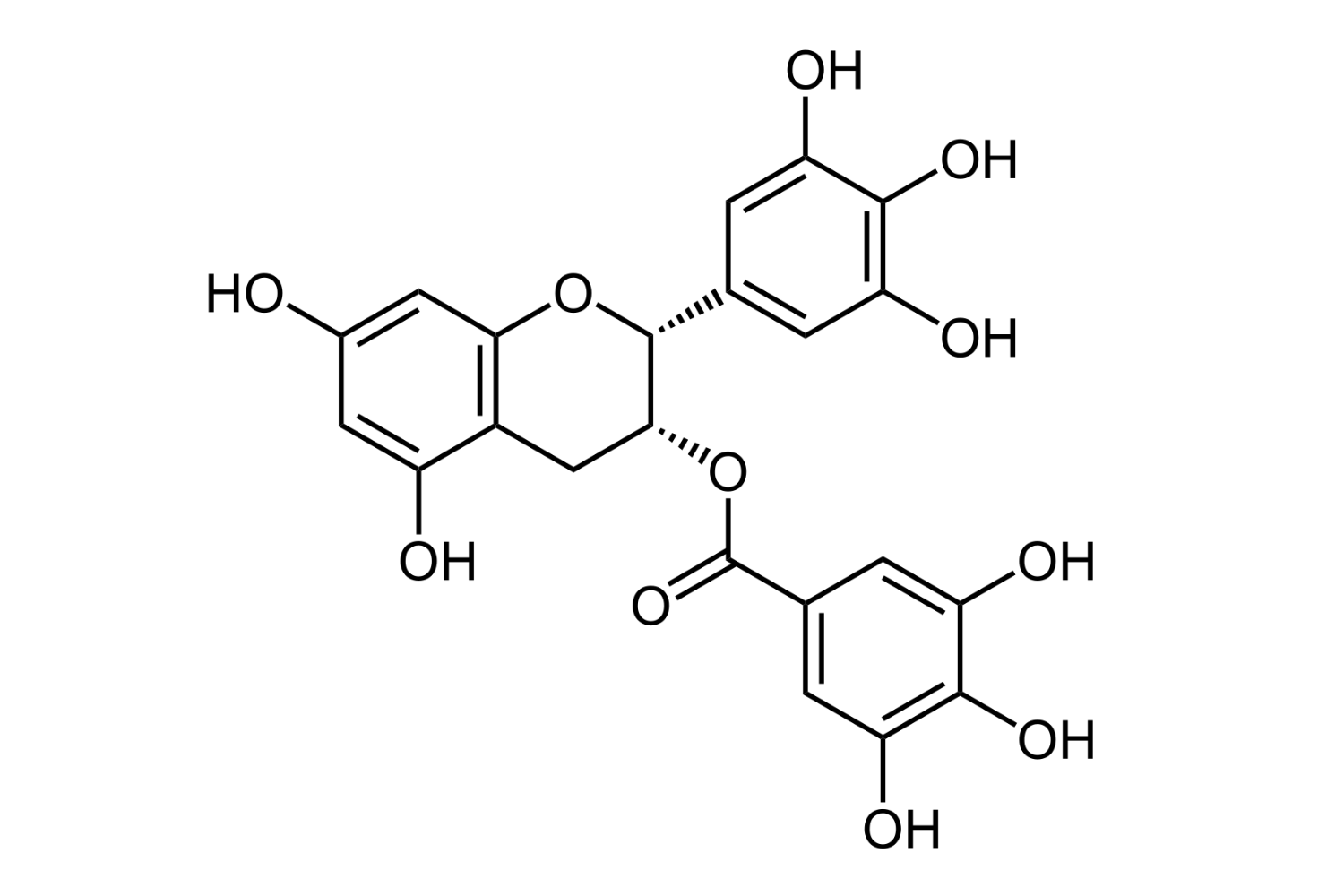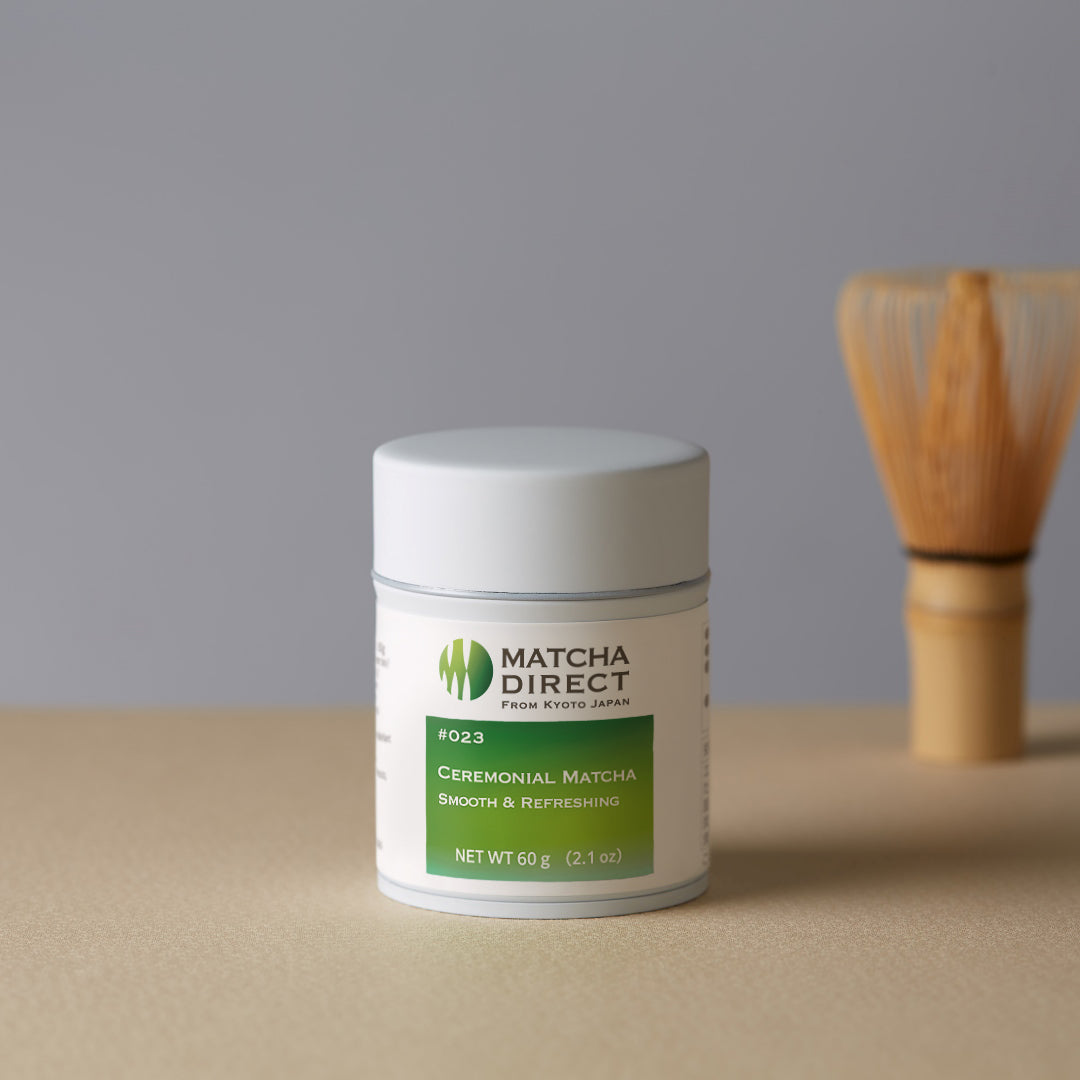EGCG and Catechin in Matcha

Matcha is renowned not only for its rich flavor and vibrant green color but also for its rich nutritional profile. Among its various components, one that has garnered particular attention is “epigallocatechin gallate” (EGCG).
EGCG, a type of catechin and a member of the polyphenol family, is known to play an important role in supporting health.
This article will provide a detailed explanation of the EGCG found in matcha.
What is Catechin?
To start, let’s take a closer look at catechins.
Catechins are a type of polyphenol commonly found in green teas such as matcha and sencha. Among catechins, EGCG is one of the most prominent components.
Catechins contribute to tea’s distinct bitterness and astringency, but they also possess strong antioxidant properties, helping to protect cells from harmful substances and contributing to overall health.
In matcha, there are four main types of catechins, including EGCG:
- Epigallocatechin gallate (EGCG)
- Epigallocatechin (EGC)
- Epicatechin gallate (ECG)
- Epicatechin (EC)
Matcha and other teas that contain these catechins are considered among the most effective ways to consume catechins.
What is EGCG? Comparison and Relationship with Other Catechins
Of the four catechins listed above, EGCG is particularly abundant in teas like matcha and sencha.
In terms of content, EGCG is present in the highest amount, followed by EGC, ECG, and lastly EC. This order corresponds to the strength of their antioxidant properties, with EGCG being the strongest and EC having the mildest antioxidant effects among the four.
Interestingly, EGCG, EGC, and ECG are unique to tea, while EC can also be found in fruits such as apples, blackberries, cherries, and grapes.
Due to its high concentration and potent antioxidant power, EGCG in matcha offers significant health benefits. Drinking matcha provides an effective way to enjoy EGCG’s antioxidant effects.
EGCG in Matcha
Matcha is particularly rich in EGCG compared to sencha. Here’s why:
Matcha is grown using a special technique called “shade-growing.” A few weeks before harvest, the tea leaves are shielded from sunlight, which increases the amount of theanine, an amino acid that contributes to matcha’s unique umami flavor.
Since theanine can transform into catechins when exposed to sunlight, shading the tea leaves not only enhances the umami but also reduces the generation of catechins. As a result, the catechin content in matcha leaves is generally lower than in sencha, which is grown in direct sunlight.
However, because sencha is brewed and strained, a significant amount of catechins remains in the tea leaves after brewing, limiting the catechin content in the drink itself. In contrast, matcha is made by consuming the entire tea leaf in powdered form, allowing for complete intake of its catechins.
Additionally, Japanese studies have shown that the EGCG content in matcha remains unaffected by the shade-growing process, preserving its high EGCG concentration.
Thus, matcha provides a high intake of EGCG compared to sencha.
In contrast, fermented teas like oolong and black tea contain minimal EGCG due to the conversion of catechins into tannins during fermentation. This results in a lower catechin content compared to matcha and sencha.
In summary, matcha contains the highest EGCG levels among teas.
Moreover, matcha is rich in various other nutrients, allowing for complete intake of the tea leaf’s nutritional profile, making it a “superfood.”
https://matchadirect.kyoto/blogs/matcha-101/matcha-nutrition-facts
EGCG Intake Guidelines
While EGCG supports a healthy lifestyle, is there an upper limit to daily intake?
Although there’s no definitive upper limit for catechins, the European Food Safety Authority (EFSA) notes that consuming over 800 mg of EGCG per day may negatively affect liver function.
However, this finding is based on studies of concentrated EGCG supplements. For tea beverages, the data is less conclusive. Assuming an 800 mg daily EGCG limit, how much matcha would this correspond to?
EGCG typically comprises around 50-60% of the catechins in matcha. One cup of matcha (about 2 grams of powder) contains roughly 200 mg of catechins, meaning it includes approximately 100 mg of EGCG. From this perspective, drinking up to eight cups of matcha per day is generally considered safe.
However, this recommendation focuses only on EGCG intake, and matcha also contains caffeine, which requires cautious consumption.
Caffeine intake should not exceed 400 mg per day, according to the U.S. Food and Drug Administration (FDA). Since one cup of matcha contains about 64 mg of caffeine, it’s advisable to limit daily intake to around four cups.
https://matchadirect.kyoto/blogs/matcha-101/how-much-caffeine-is-contained-in-matcha-vs-coffee
In any case, when incorporating matcha into your daily routine, it’s recommended to enjoy it in moderation and maintain a balanced intake for a healthy habit.
Conclusion
EGCG in matcha is a potent antioxidant, contributing to daily health maintenance alongside other catechins.
With its whole-leaf consumption, matcha enables efficient intake of EGCG and other nutrients. Adding matcha to your daily routine can promote relaxation and support health.
If you’re interested in incorporating matcha into your life, consider trying MATCHA DIRECT’s fresh, meticulously ground matcha. Enjoy a healthy lifestyle with matcha at home.



















